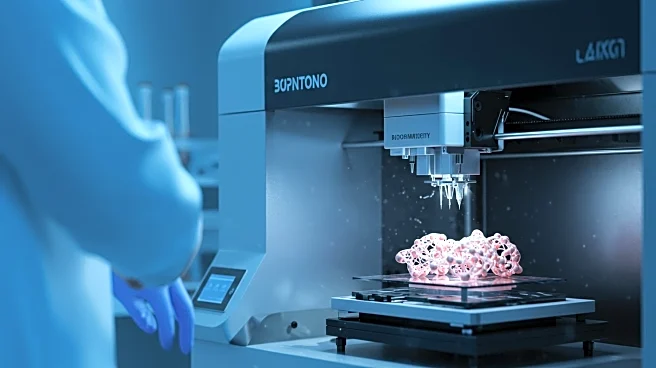What is the story about?
What's Happening?
The global 3D bioprinting market is expected to grow significantly, reaching approximately $8.42 billion by 2034, with a compound annual growth rate (CAGR) of 12.54% from 2025 to 2034. This growth is driven by factors such as an aging population, increased demand for tailored tissues and organs, and advancements in regenerative medicine. The market is fueled by technological innovations in bio-inks, bioprinting techniques, and materials, addressing the shortage of organ transplantation. The Asia Pacific region led the market in 2024, with North America expected to grow significantly in the coming years.
Why It's Important?
The expansion of the 3D bioprinting market has significant implications for healthcare, particularly in areas like tissue engineering, drug development, and regenerative medicine. The ability to create complex 3D tissue structures offers a precise platform for drug testing and disease modeling, potentially reducing reliance on animal testing. The growth of this market could lead to breakthroughs in organ transplantation and personalized medicine, addressing critical healthcare challenges such as organ shortages and chronic disease management.
What's Next?
As the market continues to grow, there will likely be increased investment in research and development to advance bioprinting technologies. North America is predicted to expand significantly, driven by advancements in tissue engineering and organ transplantation. The integration of digital technologies into healthcare may further enhance bioprinting adoption, creating a more favorable environment for innovation and application.
Beyond the Headlines
The growth of the 3D bioprinting market raises ethical and regulatory considerations, particularly regarding the biocompatibility of materials and the potential for personalized medicine. The market's expansion may also influence global healthcare policies, as countries invest in bioprinting technologies to address healthcare challenges and improve patient outcomes.
AI Generated Content
Do you find this article useful?
















